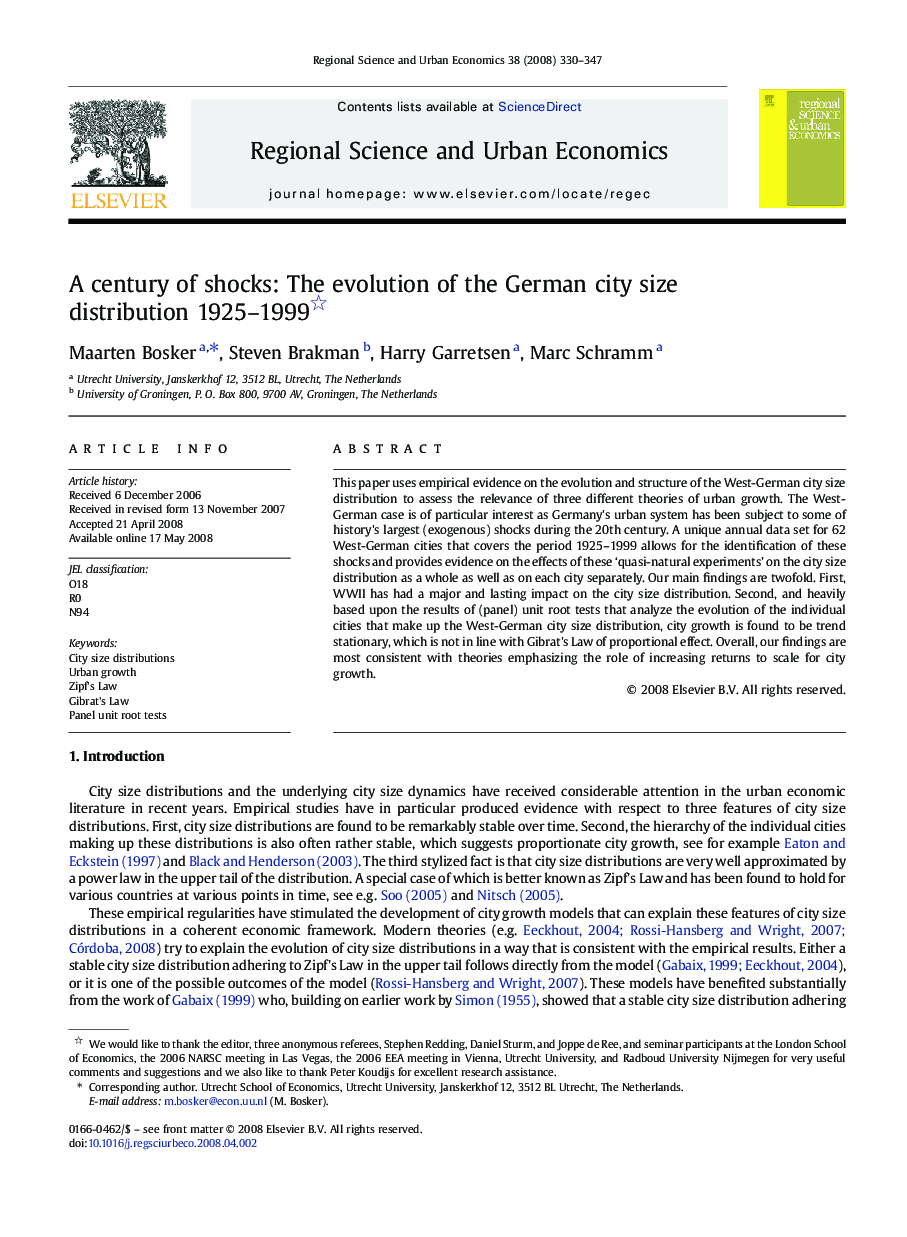| Article ID | Journal | Published Year | Pages | File Type |
|---|---|---|---|---|
| 983535 | Regional Science and Urban Economics | 2008 | 18 Pages |
This paper uses empirical evidence on the evolution and structure of the West-German city size distribution to assess the relevance of three different theories of urban growth. The West-German case is of particular interest as Germany's urban system has been subject to some of history's largest (exogenous) shocks during the 20th century. A unique annual data set for 62 West-German cities that covers the period 1925–1999 allows for the identification of these shocks and provides evidence on the effects of these ‘quasi-natural experiments’ on the city size distribution as a whole as well as on each city separately. Our main findings are twofold. First, WWII has had a major and lasting impact on the city size distribution. Second, and heavily based upon the results of (panel) unit root tests that analyze the evolution of the individual cities that make up the West-German city size distribution, city growth is found to be trend stationary, which is not in line with Gibrat's Law of proportional effect. Overall, our findings are most consistent with theories emphasizing the role of increasing returns to scale for city growth.
